| Modern Pulp | Nov 28 2018 |

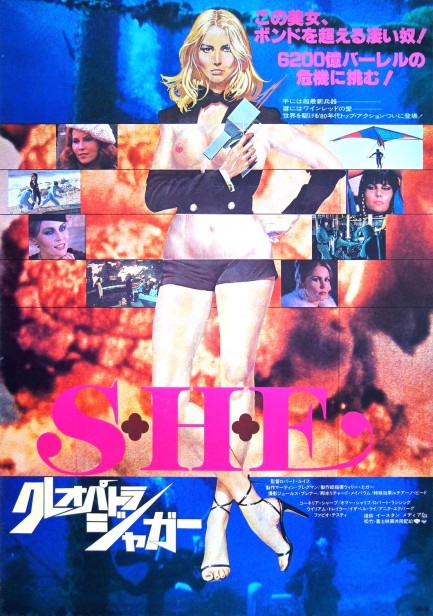

| Vintage Pulp | Dec 16 2015 |

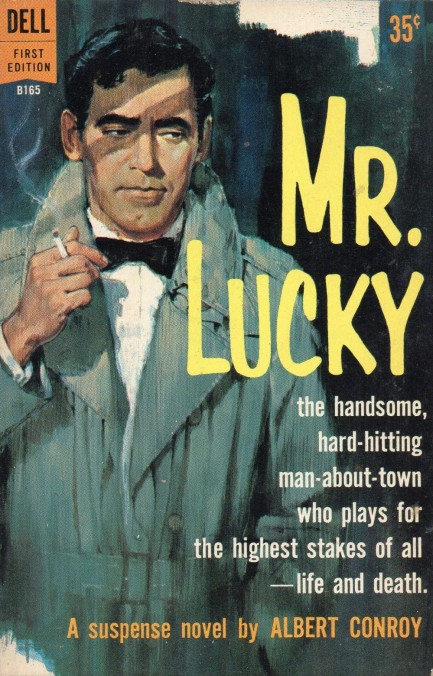
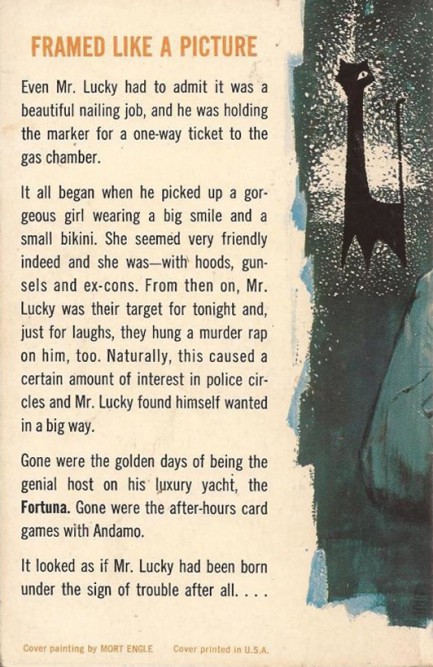
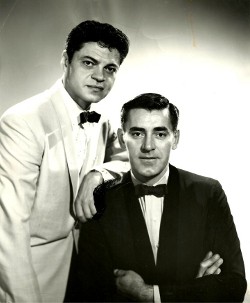 Mr. Lucky by Albert Conroy, aka Marvin H. Albert, has nice wraparound art, and the back cover, featuring an unlucky black cat, completes an excellent illustration by Mort Engle. This was actually the novelization of a 1959 Blake Edwards television series of the same name about a gambler who runs a casino on his yacht the Fortuna II, which is anchored off Los Angeles, but beyond the three-mile limit in international waters. In the book he’s framed for murder; in the series he and his sidekick Andamo have assorted wacky adventures, both on the boat and on land, often involving mobsters. The show starred John Vinyan and Ross Martin, and ran for thirty-four episodes—just one season. It was actually quite popular with viewers, but CBS cancelled it anyway. Vinyan said he thought it was done as a favor to Jack Benny to free the time slot for Checkmate, which was made by Benny’s production company. After the axe fell Blake Edwards tried to develop Mr. Lucky as a movie, and it’s possible Conroy’s 1960 novel had something to do with that. That part of the story is murky, but we’ll see if we can dig up a bit more.
Mr. Lucky by Albert Conroy, aka Marvin H. Albert, has nice wraparound art, and the back cover, featuring an unlucky black cat, completes an excellent illustration by Mort Engle. This was actually the novelization of a 1959 Blake Edwards television series of the same name about a gambler who runs a casino on his yacht the Fortuna II, which is anchored off Los Angeles, but beyond the three-mile limit in international waters. In the book he’s framed for murder; in the series he and his sidekick Andamo have assorted wacky adventures, both on the boat and on land, often involving mobsters. The show starred John Vinyan and Ross Martin, and ran for thirty-four episodes—just one season. It was actually quite popular with viewers, but CBS cancelled it anyway. Vinyan said he thought it was done as a favor to Jack Benny to free the time slot for Checkmate, which was made by Benny’s production company. After the axe fell Blake Edwards tried to develop Mr. Lucky as a movie, and it’s possible Conroy’s 1960 novel had something to do with that. That part of the story is murky, but we’ll see if we can dig up a bit more. | Hollywoodland | Jul 6 2009 |

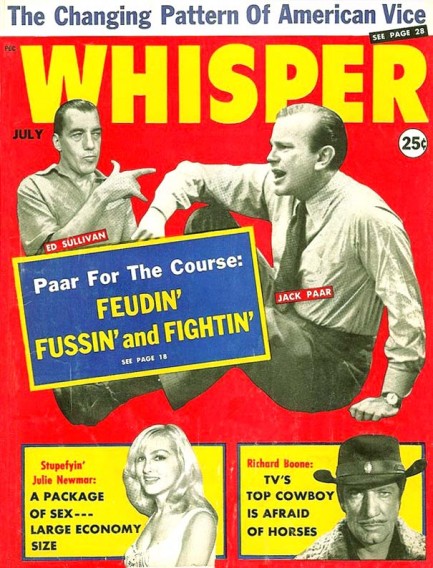
Above you see a Whisper magazine cover from July 1961. We mentioned in our previous post on this tabloid that it was published by Confidential owner Robert Harrison, and here you see a more typical visual motif, pretty much duplicating the Confidential style. The tabloid formula always calls for a little sex (which you get in the person of Julie Newmar), a little crime (which you see in the banner about vice), and a little absurdity (Richard Boone the television cowboy is afraid of horses). Those three stories are self-explanatory, so we won’t bother to elaborate, but the centerpiece item about a feud between Jack Paar and Ed Sullivan may require a bit of explanation.
Everyone knows who Ed Sullivan was, but Paar is less famous these days. However it was Paar who really established the modern blueprint of late night talk shows, taking over a Tonight Show that was floundering, and within a year turning it into such a hit that it was renamed The Jack Paar Tonight Show. But there was a flipside to his brilliance—he was an emotional man who shot from the hip and dealt with the consequences later. Once, when one of his jokes was cut, he waited until the next night, replaced his monologue with a verbal broadside at the network, and walked off the show, leaving his astonished announcer Hugh Downs to finish the taping. It wasn’t the first or last time Paar did something shocking—he often cried on air. When you consider that Ed Sullivan was an emotionally distant figure known as “old stone face,” it’s clear he and Paar were probably destined to hate each other—if for no other reason than their diametrically opposed personalities.
Part of the Paar-Sullivan feud revolved around the Beatles. In January 1964 on his show The Jack Paar Program, Paar featured the Fab Four in a series of film clips leased form the BBC. When Sullivan had the real-life Beatles on his program later that year people forgot that 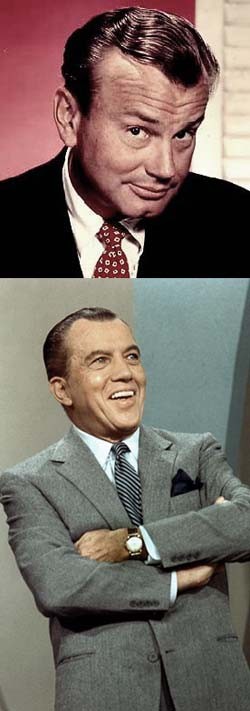 Paar had ever broadcast Beatles clips and Sullivan became the man who introduced the band to America. Paar believed this was blatant revisionism, but here his vanity kept him from understanding the obvious truth that film clips are nothing compared to a live performance. Besides, Paar didn’t like the Beatles’ music, and had used the film clips to joke about the band. It was only after they became a phenomenon that he publicly sought to usurp Sullivan’s credit.
Paar had ever broadcast Beatles clips and Sullivan became the man who introduced the band to America. Paar believed this was blatant revisionism, but here his vanity kept him from understanding the obvious truth that film clips are nothing compared to a live performance. Besides, Paar didn’t like the Beatles’ music, and had used the film clips to joke about the band. It was only after they became a phenomenon that he publicly sought to usurp Sullivan’s credit.
There were other occasions when the feud spilled into the open. For instance, Sullivan’s guests received several thousand dollars for their appearances, but Paar’s got a measly $320. He fought his network to try and change that, word got to the tabloids, and the tabs spun it as yet more personal animus between the two hosts, when in this case it could be argued Paar was standing up for his guests and the reputation of his show. But there was no doubt Paar and Sullivan hated each other. They were even talked into having a public debate, but it fell apart. At first, word was Sullivan had backed out, but a bit later CBS exec Douglas Edwards said it was actually Paar who had gotten cold feet. The news set Paar off. He spent nearly fifty minutes of The Tonight Show trashing Ed Sullivan. He began by facetiously describing his rival as a man who was “as honest as he is talented,” and ended by flatly calling him a liar.
The Paar-Sullivan rivalry only lost its steam when Parr retired, and Sullivan’s show declined and was finally axed June 6, 1971. Parr made a brief comeback in 1973, but quit for good shorty thereafter. None of us at Pulp Intl. are old enough to have seen the Paar-Sullivan blood feud, but there's plenty of text about it on the web to give a sense of what it was like. When we try to think of a comparable modern day dust-up between two relevant, powerful, and brilliant personalities we come up blank—and don't even try to put O’Donnell-Limbaugh in the same class. The Paar-Sullivan feud was a clash of beloved titans who, even in the midst of their battles, tried to entertain, educate, and elevate their audiences. American television hasn’t been the same since.




































































